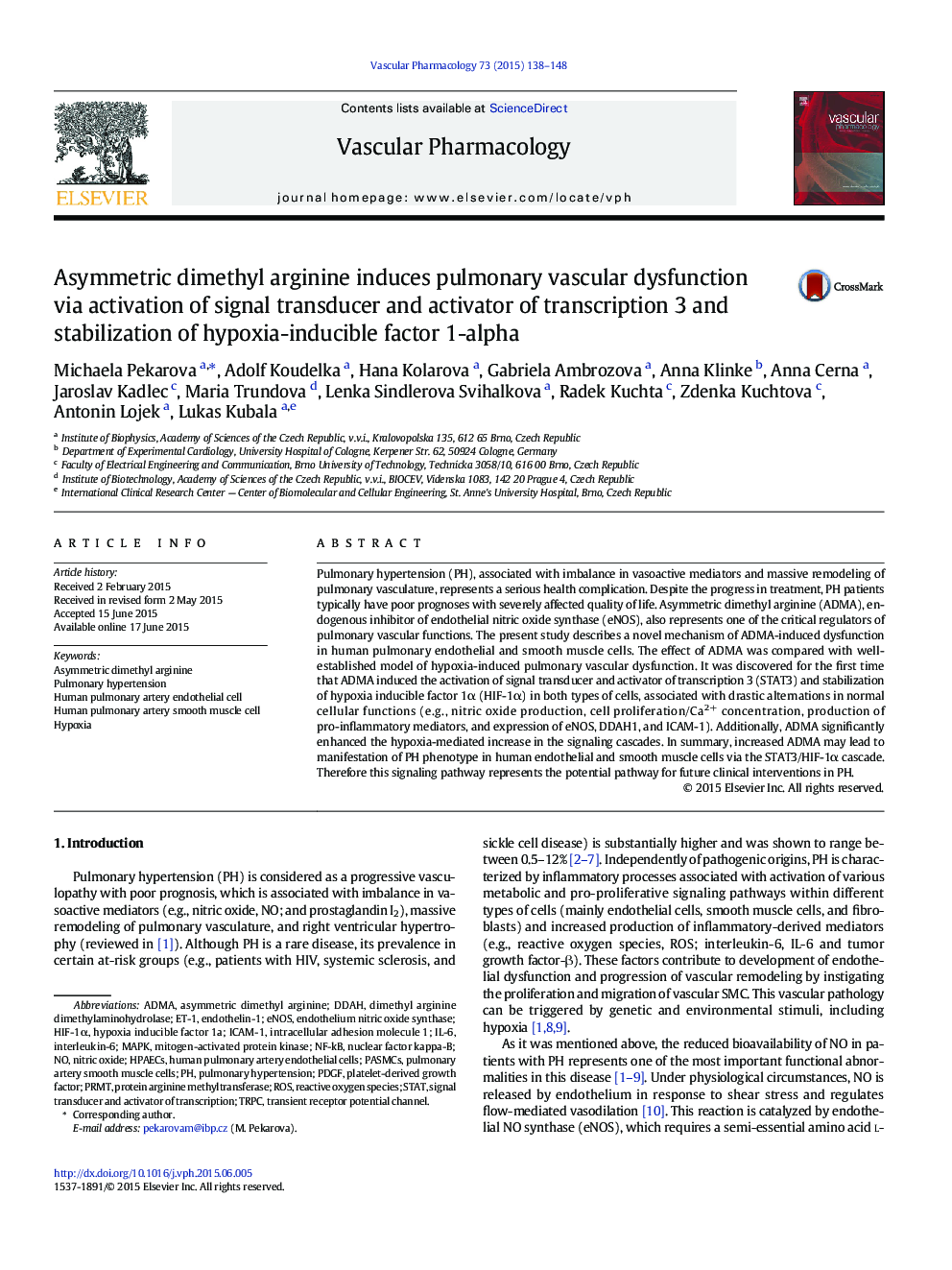| کد مقاله | کد نشریه | سال انتشار | مقاله انگلیسی | نسخه تمام متن |
|---|---|---|---|---|
| 2573964 | 1561245 | 2015 | 11 صفحه PDF | دانلود رایگان |
Pulmonary hypertension (PH), associated with imbalance in vasoactive mediators and massive remodeling of pulmonary vasculature, represents a serious health complication. Despite the progress in treatment, PH patients typically have poor prognoses with severely affected quality of life. Asymmetric dimethyl arginine (ADMA), endogenous inhibitor of endothelial nitric oxide synthase (eNOS), also represents one of the critical regulators of pulmonary vascular functions. The present study describes a novel mechanism of ADMA-induced dysfunction in human pulmonary endothelial and smooth muscle cells. The effect of ADMA was compared with well-established model of hypoxia-induced pulmonary vascular dysfunction. It was discovered for the first time that ADMA induced the activation of signal transducer and activator of transcription 3 (STAT3) and stabilization of hypoxia inducible factor 1α (HIF-1α) in both types of cells, associated with drastic alternations in normal cellular functions (e.g., nitric oxide production, cell proliferation/Ca2+ concentration, production of pro-inflammatory mediators, and expression of eNOS, DDAH1, and ICAM-1). Additionally, ADMA significantly enhanced the hypoxia-mediated increase in the signaling cascades. In summary, increased ADMA may lead to manifestation of PH phenotype in human endothelial and smooth muscle cells via the STAT3/HIF-1α cascade. Therefore this signaling pathway represents the potential pathway for future clinical interventions in PH.
Figure optionsDownload high-quality image (266 K)Download as PowerPoint slide
Journal: Vascular Pharmacology - Volume 73, October 2015, Pages 138–148
